16 Surprising Facts About the U.S. Post Office
Updated: Nov. 28, 2022
For starters, did you know that the postmaster general earns more than the vice president.
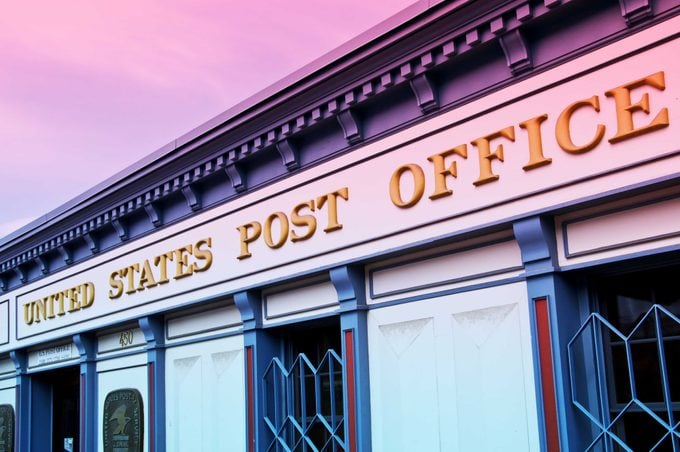
The U.S postal system was officially established on July 26, 1775 and has been an integral part of American society ever since. However, the system has certainly experienced many changes since the colonial days, with the official United States Postal Service (USPS) being created in 1971. This stately fixture in the country is currently facing serious debt issues and is even in danger of being completely disbanded, not to mention the current debacle over how the reductions in USPS machinery will affect mail-in voting for this November’s election. With all the news surrounding the USPS, it’s time to brush up on these facts about the history of the U.S. post office.
1. The first post office was in a bar.
The very first post office in colonial America was established in 1639 in the Boston home—which was also a tavern that sold “stronge water”—of a man named Richard Fairbanks.
2. American newspapers largely owe their existence to the post office.
As part of the Post Office Act of 1792, newspapers—which were seen by the Founding Fathers as essential for maintaining an educated citizenry by spreading information—were permitted to be mailed at extremely low rates. The result: By the start of the 19th century, newspapers made up the bulk of the U.S. mail. In 1840, 91 percent of white American adults could read, and this impressive literacy rate was attributed in part to the widespread availability of newspapers. Here are 23 other things your postal carrier isn’t telling you.
3. The same Post Office Act imposed the harshest of penalties—death!—on mail thieves.
Because the U.S. mail was the only official way to send money, this severe punishment was less a reflection of the government’s cruelty and more an indication of the importance of safe postal delivery. Congress soon reconsidered, and in 1799, stealing mail for first-time offenders was punishable by a public whipping and a prison sentence of up to 10 years. However, second offenders were still subject to death, which was unchanged until 1872.
4. The Postmaster General was once a semi-celebrity.
The job was viewed as so critical to a young United States that John McLean, Postmaster General from 1823 to 1829, reported directly to President James Monroe and then to President John Quincy Adams. His next position after Postmaster General? U.S. Supreme Court Justice. In later years, he was viewed as a serious presidential candidate.
5. For 141 years, getting a job at the U.S. postal system depended on one thing: connections.
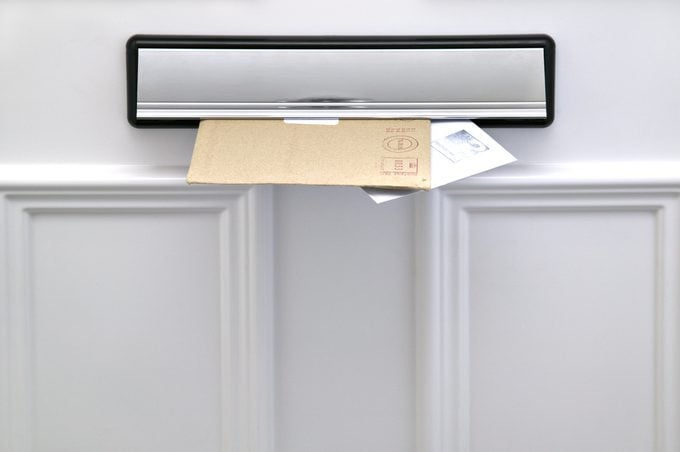
Beginning with Thomas Jefferson’s presidency (1801-1809), it became a tradition—albeit an unethical one—for the winning candidate to fire a significant swath of federal employees and replace them with party loyalists. Then, when Andrew Jackson was elected to the Oval Office in 1828, he went further and tied this political perk to the postal service, which at the time accounted for 75 percent of all civilian federal employees. He made it customary for the new president to fire many of the postal workers and hand out the positions to supporters. Astonishingly, this practice continued all the way until 1969 when it was abolished by President Richard Nixon. This, at least, was one form of corruption that he could not take.
6. The Postmaster General used to be in the line of succession to the Presidency.
President Jackson also decided that the Postmaster General should sit in the Cabinet, thereby putting the office on the same level as the Secretaries of War, Treasury, and State—and putting the PG in contention to be the Commander in Chief. True, the Postmaster General was last in line, but that still put him or her a heartbeat, or dozen, away. The Postmaster General was finally removed from the Cabinet and from succession in 1971. These are 10 of the craziest things people have ever shipped.
7. Until the mid-19th century, recipients—not senders—usually had to pay for postage on the letters they received.
As a result, people tended to refuse so many letters in order to escape paying for them, which caused the post office to spend an inordinate amount of time returning mail to senders. Postage stamps—which were prepaid—were introduced in America in 1847 and eliminated this problem.
8. The U.S. mail was the original enabler of trolls.
In the 19th and early 20th centuries, insulting “vinegar” or “poison” valentines were a popular trend in America (and England, btw). These cards featured a male or female caricature of popular stereotypes like a miser or a spinster, and the drawing was accompanied by mean-spirited verse. Here’s one sample: “Hey, Lover Boy, the place for you/Is home upon the shelf/‘Cause the only one who’d kiss you/Is a jackass like yourself!”
9. While the Pony Express did deliver mail, it was never part of the U.S. postal service.
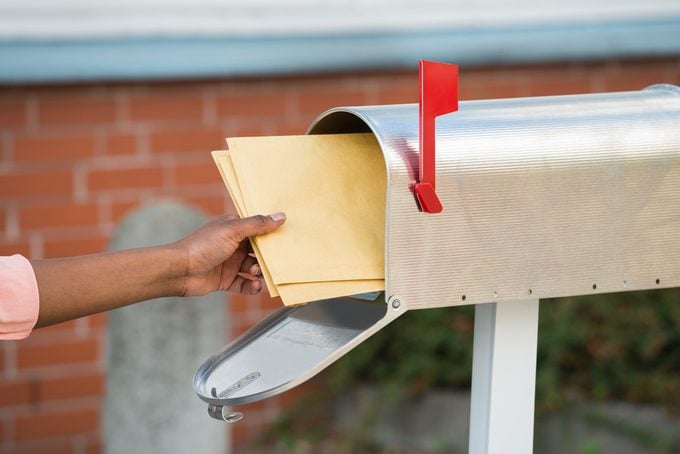
Contrary to popular belief, the rugged Pony Express was a trailblazing mail and private service that took on the difficult task of bringing mail through the Wild West before the U.S. postal service got there. The Express was in business for a year and a half, from April 3, 1860, to October 24, 1861. Scrappy riders—“orphans preferred,” a help-wanted ad stated—ferried letters from St. Joseph, Missouri, to San Francisco, galloping through the Great Plains, the Rockies, and the High Sierras.
10. Everyone had to go to the post office to get mail—until the Civil War helped change one man’s mind.
In 1863, Free City Delivery—i.e., free delivery of mail at your home—was first launched in Cleveland. Joseph Briggs, a postal clerk in that Ohio city, is said to have come up with the idea over the previous winter when he saw so many women customers who were forced to wait in long lines at the post office, freezing and fretting, since the only way to get news of their loved ones fighting in the war was via the mail. His Free City Delivery was such a success that it quickly spread to other cities before becoming a national norm. What’s more, Civil War veterans got dibs on applying for the newly-created mail carrier jobs. One other postal innovation prompted by the Civil War: money orders, so that Union soldiers could send their money home safely.
11. Like most occupations, postal clerks in 19th-century U.S. tended to be male—except at the Dead Letter Office.
Starting in 1825, all mail that was unlabeled, mislabeled, or insufficiently labeled in America was sent to a central Dead Letter Office in Washington, D.C. This was the only place in America where people who weren’t a letter’s intended recipients were allowed to open up someone else’s mail. The postal employees hired for this job needed to be honest—to prevent pilfering of all the mail they had access to—and because women were seen back then as being more honest than men, the staff overwhelmingly consisted of women. Clergy were also employed to work there. For years, the DLO was a popular tourist destination. Today, it is not, it goes by the much less dramatic name “Mail Recovery Center,” and it is located in Atlanta.
12. Mail carriers should have been called mail waiters.
Even though mail became delivered to people’s homes, mail carriers were allowed to hand it only to the recipient. This meant workers waited and waited or circled back over and over again until their target, er, customer, came home. As of March 1, 1923, all U.S. homes had to have a mail box or slot, and just like that, postal employees no longer had to worry about patrons—just their dogs.
13. Your mailman used to be able to bring you greens, eggs, and ham.
From 1914 to 1920, the Farm-to-Table program was a novel initiative that allowed farmers to arrange prices with people in urban areas and then mail them their choice of ham, bacon, fresh meats, poultry, eggs, butter, cheese, nuts, maple syrup, honey, jellies, preserves, fruits, and vegetables. This was seen as a way to give farmers more customers and city dwellers greater and cheaper access to fresh goods, and, after World War I started, it was touted as a way to help meet President Woodrow Wilson’s goal of food conservation in America. The two most popular Farm-to-Table products? Butter and lard.
14. When the Hope Diamond was donated to the Smithsonian Institution, it went via U.S. mail.
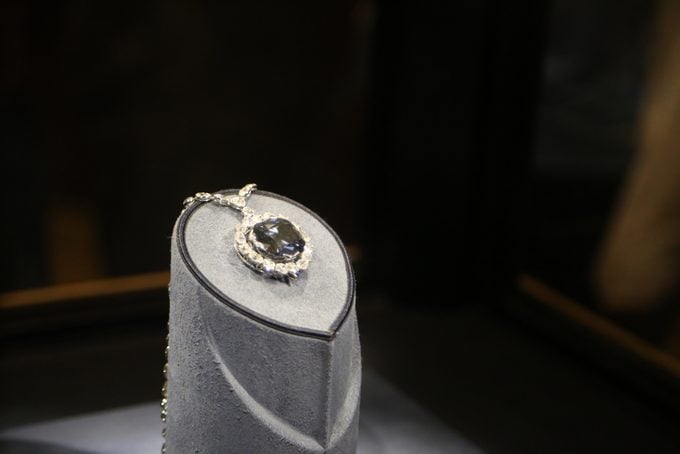
In 1958, New York City jeweler Harry Winston donated the 45.52 carat Hope Diamond—today, valued at $350 million—to the Smithsonian. He so trusted in the U.S. Postal Service, which he regularly used to send jewels, that he turned to it to transport one of the world’s most valuable gems. The cost of registered first-class postage was $2.44 (around $15.80 today); plus, Winston paid an additional $142.05 (roughly $917 today) to insure it for $1 million. It arrived safely at his destination. The Smithsonian still possesses the original packaging with the postmarks, and although it is not on display, the Hope Diamond is. Here’s how the U.S. government really spends your tax dollars.
15. The U.S. Postal Service has no official motto.
Many people believe that the U.S. mail’s motto is this phrase: “Neither snow nor rain nor heat nor gloom of night stays these couriers from the swift completion of their appointed rounds.” Yes, it’s true that those are the words engraved on the front of New York City’s majestic 1912 James A. Farley Post Office, but they were taken from a 5th-century, BC, book by the Persian historian Herodotus. They refer not to America’s stalwart men and women in blue but to messengers in the ancient Persian Empire (who wore … purple? pink?). This quote was selected by an employee at McKim, Mead, and White, the architectural firm that built the post office, and set in stone in the post office—and in people’s minds. How’s this for a bizarre post office fact—people used to be able to ship babies through the US Postal Service!
16. After the U.S. president and vice president, the postmaster general is the next highest-paid federal government employee.
The U.S. president earns a base salary of $400,000 a year; the postmaster general gets a base salary of $276,840. As a result, she—the current officeholder is Megan Brennan, the first woman in history to hold the job—out-earns the U.S. vice president, who makes $243,500.
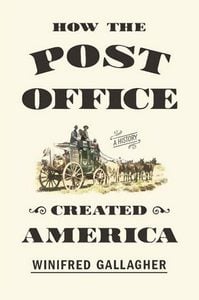
You can find these facts and many, many more in the fascinating new book How the Post Office Created America, by Winifred Gallagher (Penguin Press, 2016). Next, check out 50 of the dumbest laws in every state.